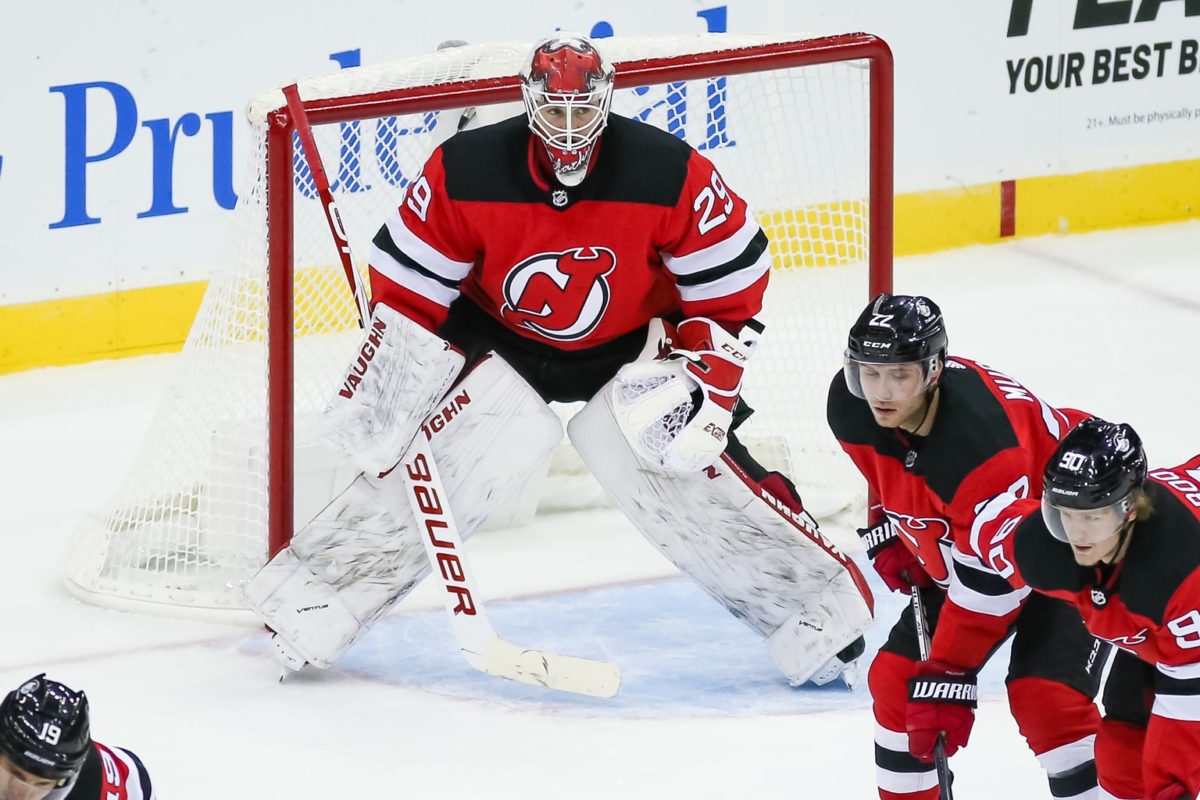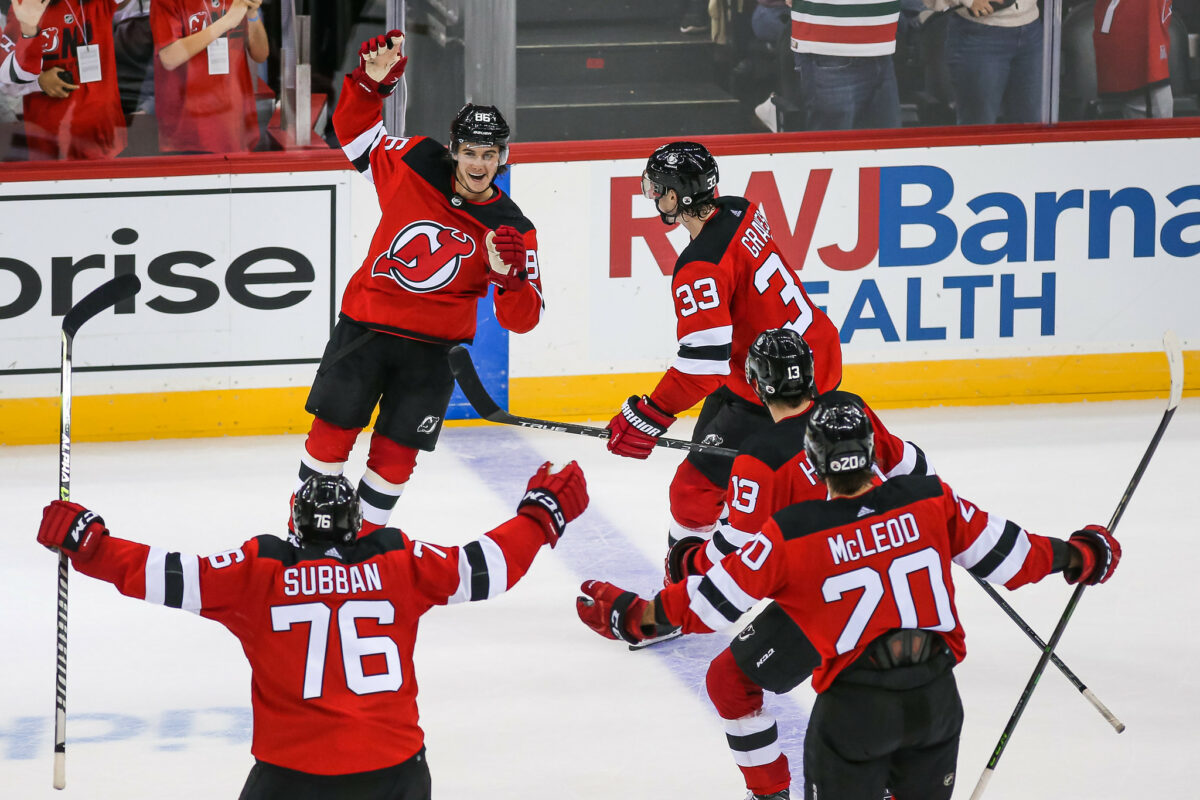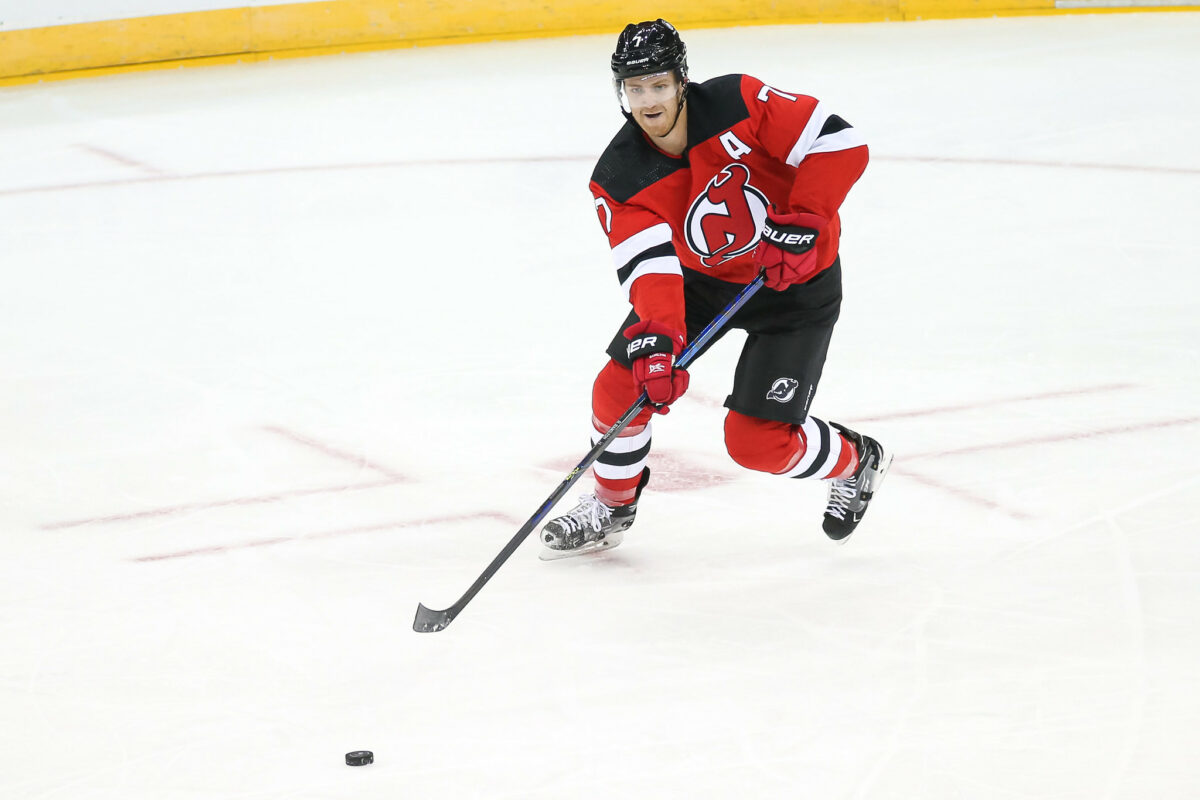With the 2021-2022 NHL season underway, signings and off-season acquisitions are now sorted out, and teams have unveiled their starting rosters. NHL teams will sort out their opening night rosters through training camp and hope that their offseason allowed their roster to improve. For the New Jersey Devils, every September is an interesting and exciting time for the team and their fans. Devils’ fans hope to see progression amongst their younger players to possibly make it to the playoffs come April. This year, the Devils’ offseason should bring a different level of competitiveness to the team.
When discussing the Metropolitan Division, it’s often considered the toughest division with the best teams in the league. However, this is a very debatable topic that constantly changes. The division consists of the Carolina Hurricanes, Columbus Blue Jackets, New York Islanders, New York Rangers, Philadelphia Flyers, Pittsburgh Penguins, and Washington Capitals. For the majority of the last five years, the Devils have found themselves at the bottom of the standings. However, after a better and more active offseason than all of their division foes, New Jersey has a chance to surprise the league.
Devils’ 2020-21 Season
The 56-game NHL season found New Jersey at the bottom of their division yet again. The team finished in the seventh position, only ahead of the Buffalo Sabres. According to QuantHockey.com, the Devils scored 145 goals and gave up 194. Scoring was less of a problem for the team, but their defense and goaltending were harmfully inconsistent. In the lead-up to the shortened season, the expectations were not high. Sports sites such as ESPN and SportingNews labeled the Devils to finish dead-last in the Eastern Division. In literal terms, the Devils defeated their expectations by earning a record of 19-30-7 to total 45 points, eight more points than the Sabres.

Despite the season being a disappointment, New Jersey’s young guns showed a lot of growth and potential. Namely, players such as Ty Smith, Yegor Sharangovich, and Janne Kuokkanen were all welcome additions to the roster. Furthermore, staple players such as Jesper Bratt, Jack Hughes, Pavel Zacha, and Miles Wood stood out more than prior years.
The shortened season was a perfect opportunity for the young team to gain experience of a rigorous schedule against playoff-contending teams almost every night. Now that the season is in the past, the team will look to grow on the positives that arose from it.
Devils on the Rise
For head coach Lindy Ruff, he will have a much easier schedule to deal with during the 2021-2022 season. The team will not have to play every other night. Plus, the competition will not always be top-tier every game. Despite a more regular feel to the season, such as playing every team, regular division, and no taxi squad, COVID-19 will still be a battle that teams will have to face. For the Devils, a key piece to the team will be subject to daily testing and very strict limitations. Mackenzie Blackwood has begun the season unvaccinated but has publicly spoken about getting the vaccine in the near future.
With the young group of players who will be with the Devils for a long time, each season should show progression. Adding in players such as Dougie Hamilton, Ryan Graves, Tomas Tatar, and Jonathan Bernier will complement the young group tremendously. Despite the added veteran presence, the Devils have the league’s youngest roster. The average age of the roster is 25 years, nine months, and seven days.
Related: Devils’ Acquisition of Ryan Graves Deserves More Attention & Appreciation
The next goal for the Devils is to not finish at the bottom of their division or the league. Since the 2018-19 season, the Devils have finished in the bottom sixth of the league. The 2017-18 season brought a surprising playoff berth, but only one playoff win against the powerhouse Tampa Bay Lightning. The presence of proven NHLers and growing, skillful young players could make the team extremely unpredictable and immensely fun to watch.
Metropolitan Division Rivals
While the Metropolitan Division is perhaps the toughest division in hockey, it also features four of the ten oldest teams in the league. The Islanders, Capitals, Flyers, and Penguins have older rosters that could dwindle in competitiveness. Enter the Devils, the youngest team in the league with a promising and plentiful pool of young talent.

A factor that could supplement the Devils into having a successful season is their offseason compared to the offseasons of their division rivals. In most cases, the teams in the divisions kept a similar roster to the season before. On the other hand, a few teams had notable losses and few helpful acquisitions. Let’s take a look at each team’s notable moves from the offseason.
Carolina Hurricanes
The Hurricanes brought in:
Forwards Jepseri Kotkaniemi, Josh Leivo, and Derek Stepan. Defensemen Tony DeAngelo, Brendan Smith, Ian Cole, and Ethan Bear. Goaltenders Frederik Andersen and Antti Raanta.
The Hurricanes lost:
Forwards Warren Foegele, Brock McGinn, Morgan Geekie, and Cedric Paquette. Defensemen Dougie Hamilton, Jani Hakanpaa, and Jake Bean. Goaltenders Petr Mrazek, James Reimer, and Alex Nedeljkovic.
The Hurricanes offseason brought a lot of setbacks for the team. Losing Hamilton will undoubtedly hurt them, along with great young pieces like Foegele, Bean, and Geekie. Trading Nedeljkovic for the small money dispute is a head-scratcher. The replacement pieces in DeAngelo, Cole, and Bear are all gambles. After the “comeback” offer sheet was made to Kotkaniemi, he will likely make an impact, but not one big enough to replace the pieces lost.
Columbus Blue Jackets
The Blue Jackets brought in:
Forwards Jakub Voracek and Sean Kuraly. Defensemen Jake Bean and Adam Boqvist.
The Blue Jackets lost:
Forwards Cam Atkinson, Mikhail Grigorenko, Zac Dalpe, Stefan Matteau, Kole Sherwood, and Ryan Macinnis. Defenseman Seth Jones.
The Blue Jackets have accepted the fact that they will likely be starting a rebuild. During the offseason, they added great pieces to help that goal. However, it will likely not help them in the upcoming season. Voracek and Kuraly will be decent veteran pieces for the team, but they’ll likely focus on the future.
New York Islanders
The Islanders brought in:
Forwards Richard Panik and Zach Parise. Defenseman Zdeno Chara.
The Islanders lost:
Forwards Jordan Eberle and Travis Zajac. Defenseman Nick Leddy.
After falling one goal short of the Stanley Cup Final, the Islanders kept their team mostly intact. However, they still lack goal-scorers. Adding Panik and Parise will not help as much as it needs to, as they are both older and less competitive than they once were.
New York Rangers
The Rangers brought in:
Forwards Barclay Goodrow, Sammy Blais, and Ryan Reaves. Defensemen Patrick Nemeth and Jarred Tinordi.
The Rangers lost:
Forwards Pavel Buchnevich, Colin Blackwell, Brett Howden, and Philip Di Giuseppe. Defensemen Brendan Smith and Jack Johnson.
After an exciting and hopeful season, the Rangers had an abysmal offseason. Getting rid of great pieces such as Buchnevich and Blackwell made no sense for the team. Instead, the Rangers focused on the Tom Wilson/Artemi Panarin incident that happened and wanted to become a grittier team. They did, but in today’s NHL, it’s often a recipe that does not lead to success.
Philadelphia Flyers
The Flyers brought in:
Forwards Cam Atkinson, Derek Brassard, and Nate Thompson. Defensemen Ryan Ellis, Rasmus Ristolainen, and Keith Yandle. Goaltender Martin Jones.
The Flyers lost:
Forwards Jakub Voracek and Nolan Patrick. Defensemen Philippe Myers, Shayne Gostisbehere, Robert Hagg, and Nate Prosser. Goaltenders Brian Elliott and Alex Lyon.
After an unexpected terrible season, the Flyers got rid of many players that were supposed to be key pieces to the team. Patrick and Gostisbehere were disappointing players that had higher expectations. Long-time Flyer Voracek has moved on from Philadelphia as well. The additions of Atkinson and Brassard are low-risk pieces that could be helpful for the team. However, most of the offseason acquisitions are gambles that are short-term solutions for the team.
Pittsburgh Penguins
The Penguins brought in:
Forwards Danton Heinen, Brock McGinn, and Dominik Simon.
The Penguins lost:
Forwards Jared McCann, Brandon Tanev, Colton Sceviour, Mark Jankowski, Radim Zohorna, and Frederick Gaudreau. Defenseman Cody Ceci.
Losing pieces such as McCann, Tanev and Sceviour were not made up with the additions of Heinen and McGinn. Despite having Sidney Crosby and Jake Guenztel on the team, there was little to no improvement for the Penguins during the offseason. Their biggest reason for getting knocked out of the playoffs, goaltending, was not addressed either. The goaltending of Tristan Jarry and Casey DeSmith could be a problem for the Penguins. With Evgeni Malkin out long-term, Pittsburgh could have a major collapse in the standings.
Washington Capitals
The Capitals brought in:
Defenseman Matt Irwin.
The Capitals lost:
Forward Michael Raffl. Defensemen Brendan Dillon and Zdeno Chara. Goaltender Craig Anderson.
The Capitals did not improve in any way during the offseason. Only bringing in Irwin will not account for the losses of Chara and Dillon. After losing in the first round of the playoffs for three consecutive seasons, the Capitals had to make improvements. However, they did not come during the offseason.

With the Devils having one of the best offseasons in the league and division, it can propel the team into a possible wild card position. Of course, experience is a major factor in the NHL, but New Jersey even added more experience with their acquisitions this summer. The mediocre off-season of their Metro competitors is a welcoming crutch that the Devils will look to take advantage of. Just like every season, the NHL is unpredictable and always changing. The Colorado Avalanche proved how a last-place team can turn into a powerhouse in one offseason after their historically bad 2016-17 season. The season has just started, and I’ll be glued to the standings trying to map out the Devils’ playoff hopes.